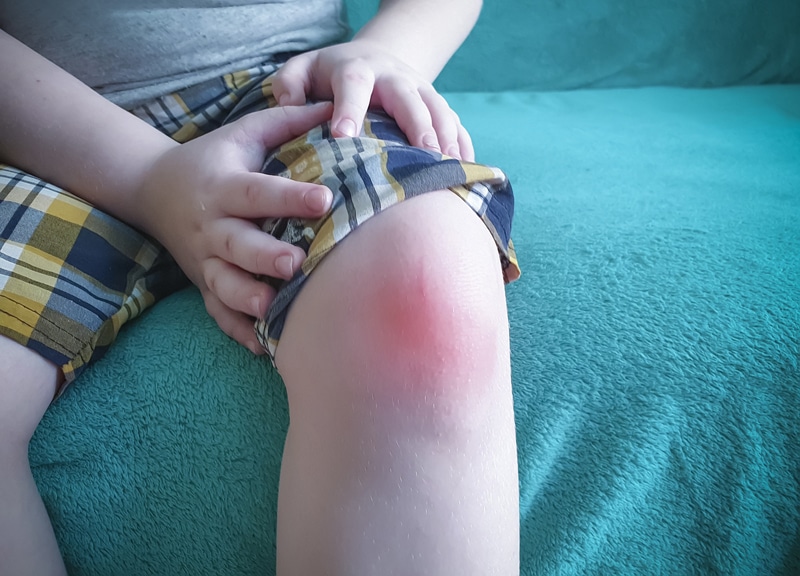It is estimated that approximately 300,000 children in the United States have some type of arthritis. The most common type of childhood arthritis is juvenile rheumatoid arthritis, now called juvenile idiopathic arthritis (JIA), where the term idiopathic means “of unknown origin”. JIA is different from rheumatoid arthritis (RA) in adults, making it challenging to manage (www.rheumatologyadvisor.com). As clinicians focus on their patients, outsourcing medical billing and coding can ensure accurate, complete, and proper reporting of services for appropriate reimbursement.
JIA is an autoimmune, non-infective, inflammatory joint disease. The body’s immune system malfunctions and mistakenly attacks healthy cells and tissues. JIA affects the synovial membrane or lining of the joint, and if untreated, can cause inflammation, pain and joint damage. The causes of JIA are unknown. Researchers believe that like most autoimmune diseases, JIA occurs due to a combination of genetic and environmental factors, and the patient’s immune system.
JIA can affect children of all ages. Children with JIA have less comorbidity than adults with rheumatic diseases, and also respond better to therapies. While there is no cure for JIA, early, aggressive treatment with medication and therapy can alleviate symptoms. The goal of treatment is to ease inflammation, manage pain, prevent joint deterioration and improve quality of life. Some patients achieve permanent remission. Any physical damage to a joint cannot be undone.
The signs and symptoms of juvenile arthritis may appear and abate over time. Symptoms will vary depending on the type of JIA.
Types of JIA
- Systemic-onset juvenile idiopathic arthritis causes inflammation in one or more joints, high fever, and skin rash. Other possible symptoms include inflammation in one or more joints, anemia, or enlarged lymph nodes, liver or spleen
- Oligoarticular juvenile idiopathic arthritis affects four or fewer of the larger joints, (knees, ankles, elbows). Patients may also develop chronic eye inflammation.
- Polyarticular juvenile idiopathic arthritis typically causes inflammation in five or more small joints (fingers and hands). Weight-bearing joints and the jaw can also be affected.
- Psoriatic arthritis is a combination of arthritis and It typically causes pain and swelling in the wrists, knees, ankles, fingers and toes. Psoriasis or skin rash occurs in areas such as the ears, eyelids, elbows, knees, etc.
- Enthesitis-related arthritis. In this condition, joint inflammation is accompanied by tenderness that occurs when the bone meets a tendon, ligament or other connective tissue. More common in boys, it usually begins between the ages of 8 and 15.
- Undifferentiated arthritis: This type of juvenile arthritis involves symptoms seen in two or more subtypes.
Diagnosing JIA
As children may not complain of joint pain initially and swelling may not be evident, JIA is difficult to diagnose. While the rheumatoid factor blood test result is usually positive in adults, children with JIA tend to have a negative rheumatoid factor blood test. Therefore, diagnosis of JIA depends on physical exam findings, medical history, and the exclusion of other diagnoses (such as infections, childhood cancer, bone disorders, Lyme disease, and lupus). Typical symptoms include:
- limping
- morning stiffness
- unwillingness to use an arm or leg
- decrease in activity level
- spiking fever
- joint swelling
- clumsiness
Besides assessment of symptoms, family medical history, and physical exam results, blood tests and imaging scans may be conducted to diagnose JIA. Blood tests include:
- Rheumatoid factor (RF)
- Anti-Cyclic Citrullinated Peptide (CCP)
- Erythrocyte Sedimentation Rate (ESR)
- C-Reactive Protein (CRP)
- Antinuclear Antibody (ANA)
Imaging scans will look for fractures, infections, and tumors. The aim will be to eliminate the possibility of other conditions that have symptoms similar to JIA. Scans can also detect any early signs of bone or cartilage damage and joint deterioration.
Treatment
Early treatment can prevent serious damage to the joints and help children live an active, full childhood. A team-based treatment approach is recommended (www.emedicine.medscape.com) and would include one or all of the following:
- Pharmacologic therapy with nonsteroidal anti-inflammatory drugs (NSAIDs), disease-modifying anti-rheumatic drugs (DMARDs), biologic agents, or intra-articular and oral corticosteroids
- Psychosocial interventions
- Measures to enhance school performance (academic counseling)
- Improved nutrition
- Physical therapy
- Occupational therapy
Coding and Documentation
ICD-10 code M08 Juvenile arthritis can be used to indicate a diagnosis of the condition for reimbursement purposes.
Incl.: arthritis in children, with onset before 16th birthday and lasting longer than 3 months
Excl.: Felty syndrome (M05.0) and Juvenile dermatomyositis (M33.0)
Relevant codes under ICD-10 code M08 include:
- M08.0 Unspecified juvenile rheumatoid arthritis
- M08.01 Unspecified juvenile rheumatoid arthritis, shoulder
- M08.02 Unspecified juvenile rheumatoid arthritis of elbow
- M08.03 Unspecified juvenile rheumatoid arthritis, wrist
- M08.04 Unspecified juvenile rheumatoid arthritis, hand
- M08.05 Unspecified juvenile rheumatoid arthritis, hip
- M08.06 Unspecified juvenile rheumatoid arthritis, knee
- M08.07 Unspecified juvenile rheumatoid arthritis, ankle and foot
- M08.2 Juvenile rheumatoid arthritis with systemic onset
- M08.3 Juvenile rheumatoid polyarthritis (seronegative)
- M08.4 Pauciarticular juvenile rheumatoid arthritis
- M08.8 Other juvenile arthritis
- M08.9 Juvenile arthritis, unspecified
To properly code diagnoses, providers need know the relevant ICD-10 codes and understand coding guidelines and conventions. They also need to ensure proper documentation. Comprehensive clinical documentation and accurate coding support proper payment and reduce claim denials. The documentation should specify the following key elements:
- Disease or disorder site
- Acuity and/or encounter status of treatment
- Etiology, causative agent, or disease type and injury/poisoning cause, intent, activity at the time of the event and place event occurred
- Underlying and associated conditions
- Manifestations
- Complications or adverse events
- Supporting info such as lab values or socioeconomic key impacts to ICD-10 documentation
New Guidelines for JIA
In April 2019, the American College of Rheumatology (ACR) in partnership with the Arthritis Foundation (AF) released two recommendations highlighting the importance of prompt and effective treatment for children with JIA and polyarthritis, sacroiliitis, and enthesitis. According to the Arthritis Foundation, juvenile arthritis is not a disease in itself, but is an umbrella term used to describe the autoimmune and inflammatory conditions or pediatric rheumatic diseases, like JIA, that can develop in children younger than 16. (www.news-medical.net/).The recently released guidelines focus on:
- Providing therapeutic approaches for non-systemic polyarthritis, sacroilitis and enthesitis
- Screening, monitoring and treatment of JIA with associated uveitis.
As they focus on the care of children with JIA, rheumatologists can rely on medical billing and coding outsourcing companies to capture codes correctly to fully report the etiology of conditions. This will ensure accurate claim submission for services rendered.




